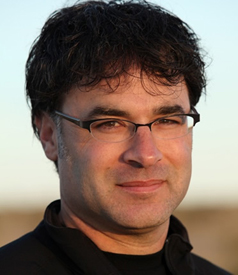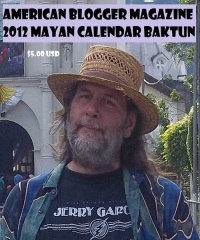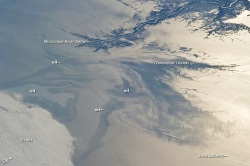Journalist Dahr Jamail
Journalist discusses BP oil spill, Gulf aftermath
CHARLESTON, W.Va. — The islands smelled like gas stations.
That’s what independent journalist Dahr Jamail said about many of the small inlet islands in the Gulf of Mexico after the BP oil spill.
“When I’d take a step, oil and sheen would come up out of the sands,” he said.
Jamail was one of hundreds of journalists who descended on the gulf from around the world to report on the largest oil spill to date. For him, it was almost too much to take in.
“For 7,400 square miles, all you can see was covered with an oil sheen,” he said. “It was a scene that was rather apocalyptic. Instead of a crystal blue water, it looked like a war zone.”
And he would know. Jamail has previously reported in Iraq and has written for numerous international news organizations, including Al-Jazeera. He was on hand Thursday night at West Virginia State University for a forum called “BP Disaster in the Gulf: Clean Up or Cover-Up?” which was jointly sponsored by Seneca2 and the West Virginia Citizens Action Group.
There are 2,087 offshore drill platforms that litter the gulf and Jamail said it was impossible to look out onto the horizon in the gulf and not see a rig.
One of the things he noticed during his six-months of investigative reporting, was that BP was not prepared to handle a spill of this magnitude, including how they regulated proper cleanup.
“Oil is hazardous. There are toxins in there that can cause serious problems,” he said. In many of the pictures he has of cleanup crews in the gulf, none of them are wearing respiratory masks.
“The only gear you can see them wearing is little yellow boots,” he said.
One of the major fallouts from the oil spill, aside from the obviously huge impact on the wetlands, Jamail said, are the health effects that are now starting to roll out.
When BP started to clean up after the spill, the company turned to dispersants, chemicals that break down and dissolve the oil, causing it to sink to the bottom. Although it does limit the oil slick sheen on water surfaces, many of the plumes remain below the surface, with no real way to get rid of them, he said.
“Ninety percent of the oil from the spill hasn’t even made it to the top,” Jamail said.
BP spread 1.9 million gallons of the dispersant across the waters of the gulf. For the company, he said, the dispersants made the spill “out of sight, out of mind,” lessening the media backlash. But now, Jamail said, they are causing serious health problems.
Some of the side effects from the dispersants are headaches, dizziness, vomiting, respiratory system damage, hypertension, central nervous system failure, cardiac arrhythmia, seizures and genetic mutations.
“And that is just the short list.”
Between the health problems caused by contact with the dispersants and the cleanup crews who are suffering from their overexposure to oil, Jamail said the problems are just beginning.
“In no way is this over,” he said.
Reach Kathryn Gregory at kathr…@wvgazette.com or 304-348-5119
source: Journalist discusses BP oil spill, Gulf aftermath | Gulf Oil Disaster









